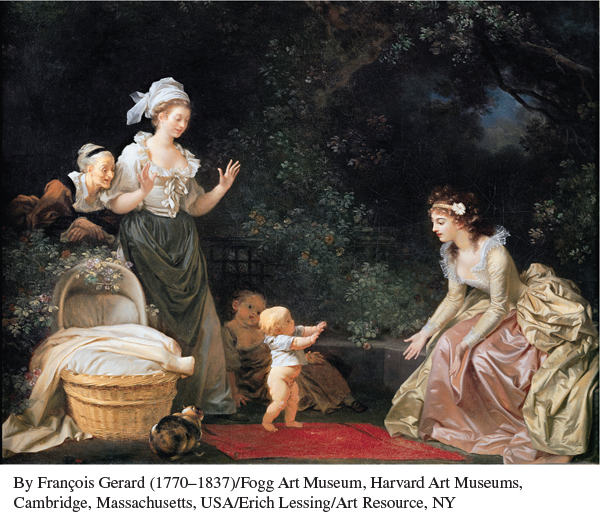A History of Western Society AP®: Printed Page 464-e
CONCEPT 2.4
Population, Prosperity, and Poverty
Traditional habits and practices of daily life changed considerably over the eighteenth century as a result of population growth, economic expansion, and ferocious political competition at home and abroad. In the seventeenth century unusually cold and wet weather, disease, and war led to stable or declining population levels, but in the eighteenth century the population of Europe began to grow markedly, largely as the result of the disappearance of the plague, public health measures such as sewage systems, better transportation systems that lessened the impact of local crop failures, and nutritious new foods, such as the potato. In western Europe, people tended to delay marriage until they could start an independent household, but they then had a number of children in rapid succession. Family and community pressure had controlled premarital sex in village society, and when young people migrated to cities in search of employment, the rate of births out of wedlock increased sharply. Child mortality generally remained high, but for those children who survived, new Enlightenment ideals stressed the importance of parental nurturing, and elementary education outside the home gradually became more available. This led to an increase in literacy, which promoted the development of popular literature, and individual reading became a pastime. Towns and cities offered a wide range of amusements to the many people who migrated there in search of work, including spectator sports, theaters, gardens, and cafés, as well as consumer goods from around the world, through which people increasingly derived their self-
